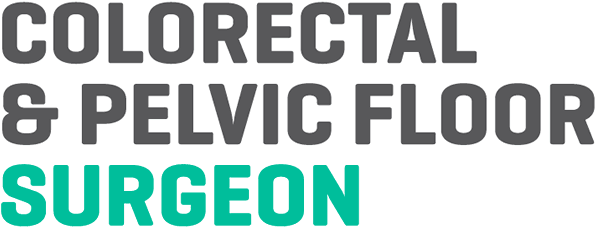- Abscess Incision and Drainage
- Advancement Flap Repair
- Anal Bulking
- Anal Tattooing
- Botulinum Toxin Injection
- Colectomy
- Delorme’s Procedure
- ELAPE Procedure
- Femoral Hernia Repair
- Fistulotomy
- Haemorrhoidectomy
- HALO-RAR Procedure
- Inguinal Hernia Repair
- Intersphincteric APR
- Lateral Internal Sphincterotomy
- Low Anterior Resection
- Pelvic Organ Prolapse
- Perineal Rectosigmoidectomy
- Rectoanal Repair
- Rubber Band Ligation
- Stapled Haemorrhoidopexy
- Stoma Creation
- Stoma Reversal
- Transanal Rectocoele Repair
- Umbilical Hernia Repair
Haemorrhoidectomy
A classical haemorrhoidectomy is an open procedure that involves making small cuts around an enlarged haemorrhoidal cushion containing haemorrhoids that are large, coming out of the anus, and/or bleeding, and removing this cushion.
Sometimes we find that one or both of the other two haemorrhoidal cushions contain haemorrhoids that are swollen, prolapsed and/or bleeding as well, but are not bad enough to need removing by haemorrhoidectomy. If this is the case, a HALO-RAR procedure* can be performed on these lesser haemorrhoids at the same time. This combined approach has the benefits of preserving as much healthy haemorrhoidal tissue as possible and lessening the pain many patients feel after a haemorrhoidectomy.
A haemorrhoidectomy is done as a day-stay procedure under general anaesthesia, so you will not feel any pain. You will need to fast from midnight on the night before if your surgery is scheduled for the morning, or from 7 am if it scheduled for the afternoon. You will have the opportunity to discuss fully all the risks and benefits of this operation with me before signing your consent form.
No special bowel preparation is necessary before a haemorrhoidectomy, unless you are also having a colonoscopy in the same sitting. You will receive an enema an hour or so before your surgery.
The surgical area may be sewn closed, but the wounds can also be left open (the skin around the anus is remarkably resistant to infection). Medicated gauze is used to dress the wound. This dressing will dissolve or fall out when you have a bowel movement. The whole procedure takes about 30–45 minutes.
You will be given a long-acting antibiotic in the anaesthetic room and an injection of local anaesthetic to help keep you pain-free in the 6 hours following your surgery.
After the operation you will be transferred to the recovery area and then to the ward. You should be able to go home the same day, but sometimes patients may need to stay longer. You should not drive after your surgery, so a friend or relative will need to take you home.
Pain is common after haemorrhoid surgery when your local anaesthetic wears off. The discomfort will get better, but may take up to 6 weeks to resolve completely. It is important to keep your bowel movements soft and regular during this time. To prevent constipation, eat foods high in fibre, and drink plenty of water (6–8 glasses a day).
Analgesia, laxatives and a 5-day course of antibiotics will be given to you to take home. It is best to keep up with the analgesia and laxatives until your bowels are moving and any discomfort is manageable. Laxatives may need to be continued for up to one month after surgery.
You can expect minor bleeding after your surgery, and a sanitary towel changed twice daily will help to prevent staining of underwear. It is normal to notice bleeding after you have opened your bowels, but if the amount of blood is more than a couple of teaspoons a day, please let my office know.
Avoid use of soaps and chemicals on the wound area. Generally, use water to wash the wound twice a day and after every bowel movement.
Exactly when patients can resume driving after this type of surgery is determined on a case-by-case basis. This is normally 1–2 weeks, but will be discussed with you after your surgery. Please let your insurance company know when you have been given the all-clear to resume driving.
Patients are usually able to return to non-strenuous activities a week after haemorrhoidectomy, and resume all normal activities, including going back to work, within 2 weeks. Some people do take longer to recover.
A follow-up appointment in the clinic will be arranged in 1–2 weeks after your surgery to check your wound and discuss any further management if required.
*When the HALO part of this operation was first developed 10 years ago, it was promoted as a stand-alone painless alternative to traditional haemorrhoidectomy. However, colorectal surgeons soon discovered that HALO performed alone, while indeed painless, had a high failure rate, but that the success rate improved markedly when HALO was combined with RAR. Unfortunately, there is still no completely pain-free surgery available to treat haemorrhoids.

